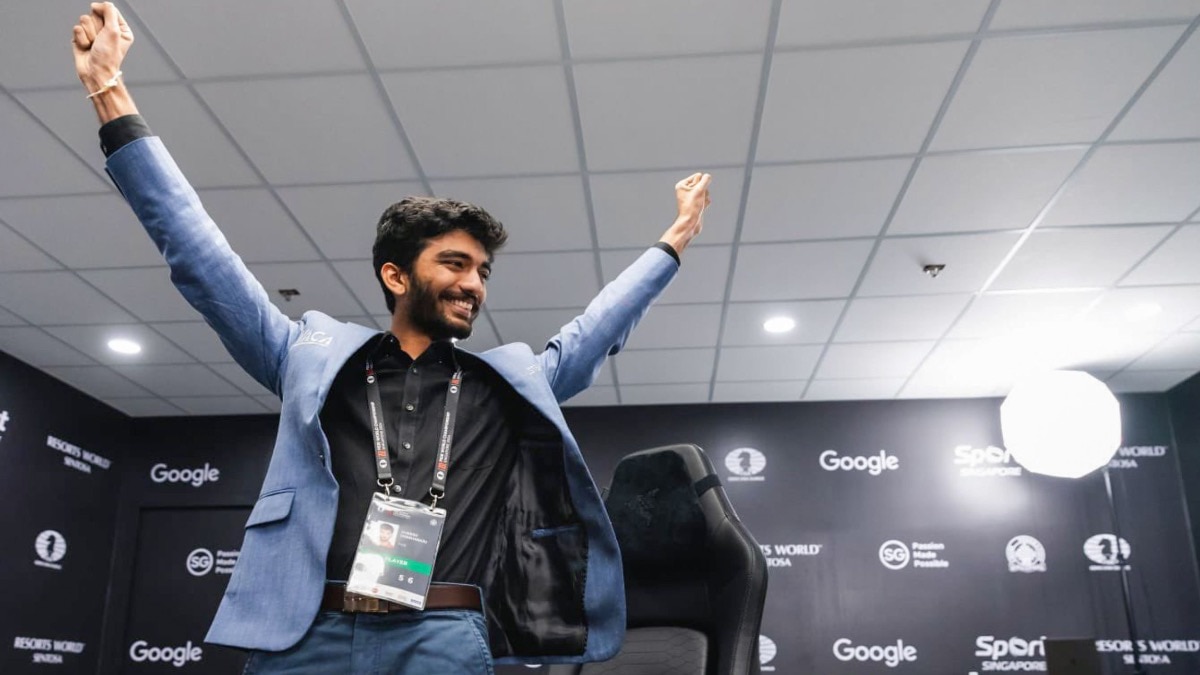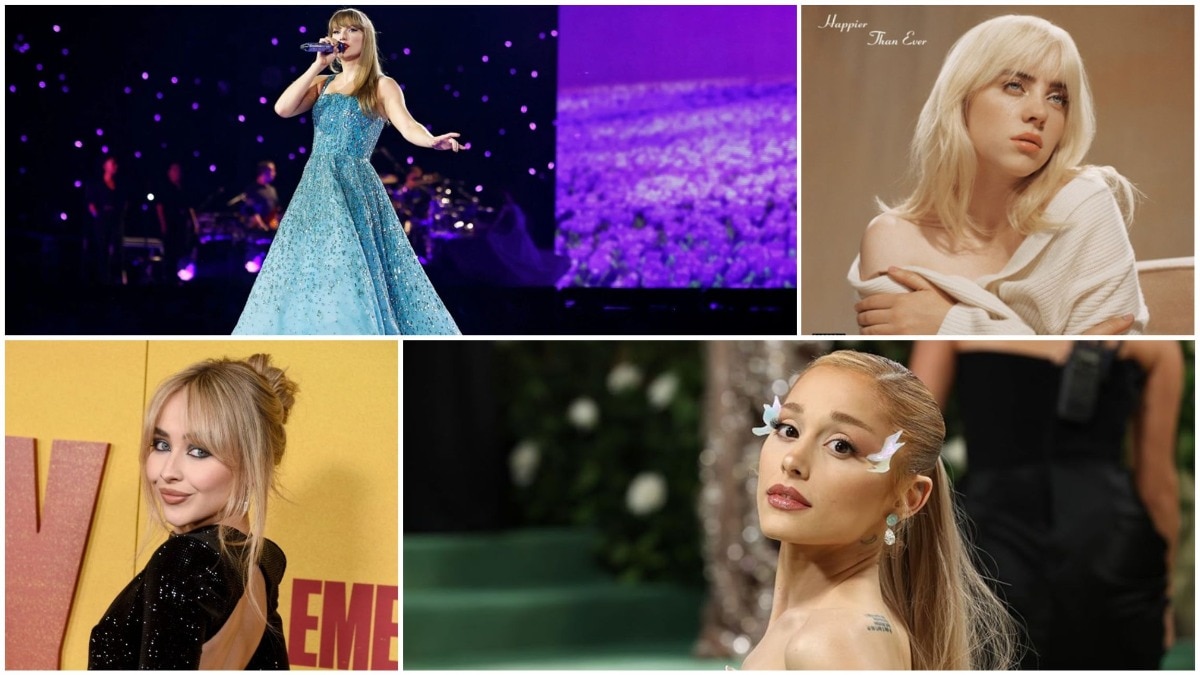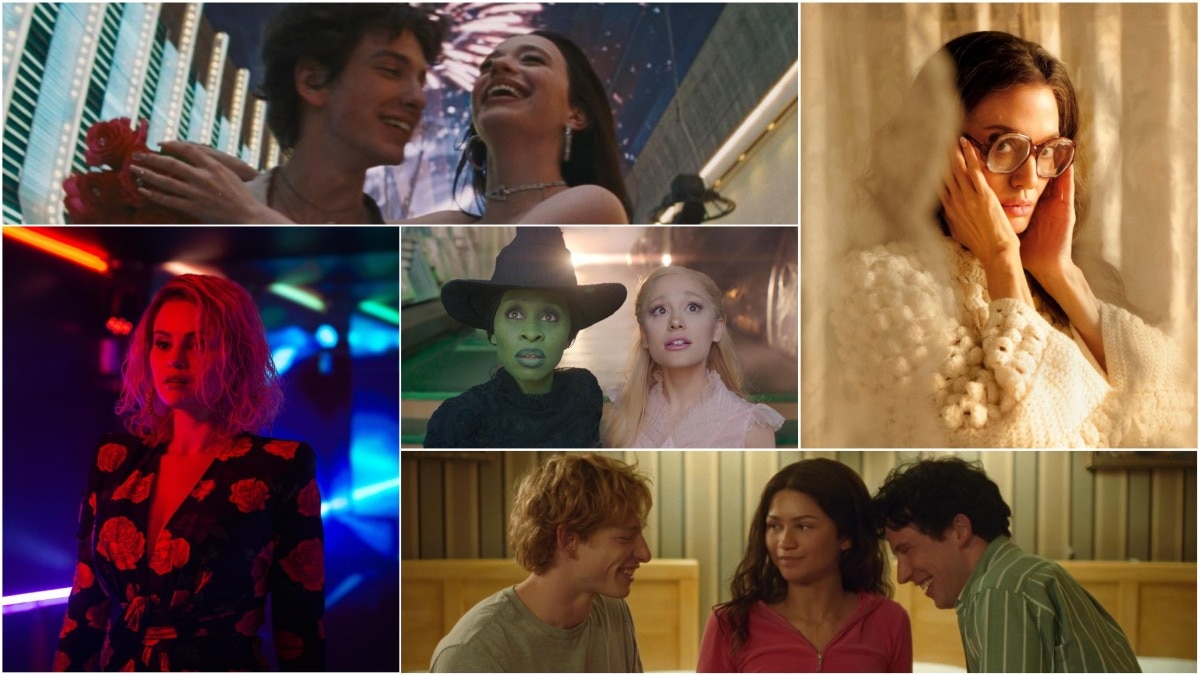Cate Blanchett diaries: Documenting the actress' latest ground-breaking work that shapes the way we see the world
As her award-winning new film garners rapturous reviews, Blanchett joins forces with the artist Es Devlin to celebrate our fragile natural world in a unique creative collaboration for Harper's Bazaar.


Wearing a shimmering brocade gown and platform heels, a glacially imposing Cate Blanchett carefully picks her way onto the Bazaar cover set, which is taking place in a cavernous studio in north London. Behind her on a screen, a line drawing of a lunar underwing moth, projected to vast size, springs into sudden life. Blanchett shuts her eyes and undulates on the spot, her body seeming to morph into the moth’s, her arms swaying with the slow beat of its wings, their markings embellishing her dazzling dress. For a moment, superstar and artwork become one, captured in the snap of the shutter, as the insect itself might once have been caught and trapped under glass.
"You know, it took me a long time to feel comfortable being captured in a still image, but there was a kinetic quality to what we were doing that I loved," Blanchett says. That moment in the studio is the culmination of a project to create a special shoot for Bazaar’s 10th Art Issue, bringing together the actress and the artist Es Devlin, whose magical set designs, fusing sculpture and light, have animated fashion shows, theatrical performances, and concert tours for stars such as Adele and Beyoncé.

"I think Es’ understanding of space is extraordinary," says Blanchett admiringly. "The inside of her mind is so animating—you feel so alive in her presence, and the way she can turn a line of intellectual inquiry into something incredibly beautiful…" The pair have more in common than a profound understanding of staging and how to make a visual impact. They are both passionate about environmental issues, hence their mutual keenness to collaborate; Devlin will show at COP27 this year, and her latest piece, Come Home Again, commissioned by Cartier and unveiled outside Tate Modern in September, celebrated London’s 243 most endangered species—birds, insects, animals, fish, plants, and fungi. Each creature has been carefully drawn by hand, then enlarged, illuminated, and mounted within a scaled-down, bisected replica of St Paul’s Cathedral. Every evening, for 10 days, a different choir performed a version of evensong inside the artwork, their voices mingling with those of the birds and insects depicted. "The first step towards these species remaining with us is for us to care about them," Devlin tells me.
"I sometimes spent 18 hours a day drawing them. It’s about paying attention, just observing, and being engaged in quite an intense way with these non-human Londoners." She has brought a selection of her exquisite line drawings to our shoot, which a team of assistants are pinning up on the walls; there is also a huge model of a human hand, out of which birds and insects are springing (it’s a nod to the scene in Luis Buñuel and Salvador Dalí’s surreal film Un Chien Andalou in which ants emerge from a human palm, but is celebratory rather than nightmarish, Devlin explains). "These creatures need to have not only a place in conservation plans, but a place in our imagination."
This is a sentiment with which Blanchett would doubtless agree. Last year, she starred with Leonardo DiCaprio in Don’t Look Up, the Netflix climate-change satire, and she recently launched her own podcast, A Climate of Change, with her friend Danny Kennedy, an environmental expert. Among the impressive roster of guests who have so far joined her are Prince William, the Prince of Wales, talking about his Earthshot prize, and Don’t Look Up’s director, Adam McKay.
Blanchett also recruited Kennedy to transform the eco-credentials of the Sydney Theatre Company when she and her husband Andrew Upton, the playwright, took over as joint artistic directors in 2008, installing solar panels and rainwater-collection tanks and ensuring that all of the sets were as green as possible.
"Often, the language around climate change is about sacrifice," she says. "But when you go out to the theatre—or to a movie, or an art gallery—and you have an extraordinary time, and you laugh, and you cry, and you’re entertained, and you eat wonderful food, and then you think: 'Oh my goodness, my carbon footprint was pretty close to neutral,' that’s beautiful. If you grapple with these things creatively, you can have beautiful but practical solutions that actually benefit us all. It’s not a sacrifice—it’s an opportunity."
It’s complicated to find time to speak to her after the photoshoot, due to her punishing travelling schedule. At 53, Blanchett is more in demand than ever. She has numerous varied projects in the pipeline, from the sublime (Todd Field’s psychodrama Tár, in which she turns in a breathtaking performance as a renowned conductor) to the ridiculous (playing an inept Lancashire hairdresser in a mockumentary called Two Hairdressers in Bagglyport, in which she’s unrecognisable beneath a wig and false teeth). There’s also Borderlands, a sci-fi action film; Disclaimer, a thriller television series; and she’s shortly heading back to Australia to play a ‘renegade nun’ in The New Boy.
We finally manage to schedule a Zoom call at 7am, two weeks after the shoot. Blanchett dials in from a hotel suite in Venice, where she’s been attending the Film Festival. The night before, she had been partying at the Tár première in black-velvet Schiaparelli trimmed with flowers; now, having overslept, she’s half-way through packing to fly to Telluride, in Colorado.
So, she’s heavy-eyed behind her big tortoiseshell specs, and throughout the conversation, her computer beeps constantly with incoming WhatsApp messages from the school mums, interspersed with alerts that Blanchett has set herself. "This is what my life is like," she says, laughing at what she calls her "early-onset dementia". "I set alarms all the time. It’s the only way I can remember to do things."
It is a brief but eye-opening glimpse into the intensity of her schedule, and it makes me feel rather sorry for her.
She wouldn’t have it any other way, however. "When I was young, I thought acting was something you did for fun," she says, recalling how she and her sister would play dressing-up games as children. "Maybe I still think that? It wasn’t about building a career; it was doing these random things. Being an actor has staved off the inevitable decision about what I have to do with my life, because I’ve empathetically stepped into various different experiences, whether they’re fantastical or based in the real world," she says. "I think I’m probably quite shy, and I find that the best way to get to know people is through making things together. It’s a way of having very active, visceral, engaging conversations with people. It keeps me social."

Blanchett may possibly be socially timid, but she is professionally courageous—hence the dizzying variety of the projects she’s undertaking. "If I pick up a script, and I can imagine myself (acting) it, I should put it down and let someone else do it," she says. "Because I think the process of making it and, therefore, ultimately, probably, the experience of watching it will be thin. It’s much more exciting to be outside of your comfort zone."
There is no doubt that her latest role pushes all her boundaries. Blanchett plays Lydia Tár, a gay, internationally renowned conductor of a German orchestra who gets caught up in a #MeToo scandal. The challenging film tackles the thorny issues of cancel culture, social media manipulation, and identity politics, while leaving the viewer free to make their own judgement on the justice (or otherwise) of Tár’s eventual fate. The script was written specially for Blanchett by Field, the acclaimed director of In the Bedroom and Little Children, and marks his return to the big screen after 15 years.
"I don’t think I’ve had as visceral a first read of a script since I read Oleanna and threw it across the room," says Blanchett, who took the lead in the Sydney Theatre Company’s production of one of David Mamet’s play in 1993. "When I read Tár, I had a similar response—what is this? I had no idea how to approach it. I said to Todd, 'This is slightly overwhelming!' And he said, 'Well, you can only eat an elephant one spoonful at a time'…"
Tár’s downfall is precipitated in part when she clashes publicly with a student who refuses to perform Bach because of the composer’s treatment of his family. I suspect Blanchett would take Tár’s side in this particular argument, having herself faced questions about her decision to work with Woody Allen on Blue Jasmine (in which she turned in another scintillating performance).
"People often talk about left and right, up and down, right and wrong, good and bad. I don’t think in those terms," she says. "Art exists in the grey area. I don’t know the answer to this question, but it’s a conversation that we must have, as artists, as humans, as a society. How do you remain in a robust and brutal relationship with the thing that you are making? You have to have a powerful inner critic, and sometimes that can come out. I have been spoken to in ways that now I could probably go to HR and complain about, but those conversations that were had with me early on in my career made me a better actor. It’s important we speak honestly with one another."
She always looks for the flaws first, she says, when thinking herself into a character. "There’s an exercise you do at drama school, where you write down everything a character says about themselves; and then you write down what every other character says about them. Somewhere between those often contrapuntal, contradictory things lies some version of the truth. One of the phrases I just cannot say is 'my truth'," she goes on, suddenly outraged. "I mean, the truth is the truth, isn’t it? I think language is so important. 'My perspective' is one thing, but 'my truth'? I don’t know what that is!"

Among her greatest challenges was being at ease conducting Mahler’s Fifth Symphony with a full orchestra, to whom she had to speak fluent German. As well as watching footage of Herbert von Karajan, Simon Rattle, Gustavo Dudamel, and other great baton wielders, she spoke to Simone Young, the chief conductor of the Sydney Symphony Orchestra. "What women wear on the podium, how they stand—before you lift a finger, it’s a political act, and you have to spend 70 per cent of your energy pushing that aside, simply so you can be a musician," she says. "The focus you need is twice what a male conductor needs, even now. So my friend said, just plant yourself there. I had to pull on my power pants, put myself on the podium, claim the right to rehearse, and not worry what they thought of me."
Dauntingly, the Dresden Philharmonic’s programme schedule meant she had to conduct them on her first days of filming (she had previously agreed with Field that she could ease herself in gently for the first week). "I said to myself, maybe there’s a gift in that. It meant that I went completely inside Tár’s physicality, and what she was born to do, and I did that first, so I knew what was at stake and what she was going to lose."
Because of the pandemic, the orchestra hadn’t rehearsed major works together for 18 months, instead performing socially distanced chamber pieces. Consequently, when Blanchett gave the down beat, the musicians came in all over the place. "It was a blessing," she says, with a chuckle. "We all laughed." (Messing up early on is a trick she learned while understudying the Australian stage-actress Kerry Walker, who told her: "On the first day of rehearsal, I fuck up so badly. Then they’ll think, 'Oh my God, she doesn’t know what she’s doing,' and they start to direct me.")
Frankly, however, Blanchett rarely, if ever, missteps; her performance in Tár has already landed her the Venice Film Festival’s Best Actress award and she’s now hotly tipped for another Oscar. When I catch up with her for a final time, she’s back at home in the English countryside and looking considerably more relaxed, her reddish-gold hair swept up in a messy knot, shirt-sleeves rolled up to the elbows. Her family and domestic life must be a welcome antidote to the intensity of her career. She and Upton have four children, ranging in age from 20-year-old Dashiell, who’s studying film at university in the US, to Edith, still at primary school. "They enjoy a sense of anonymity here, which I’m grateful for," she says.
I was once lucky enough to be invited to lunch with her there, and found the house large but not intimidatingly grand, the children forthcoming and friendly, and the atmosphere rather Larkin-esque,with homemade cakes on the kitchen table and pigs and bees in the rambling garden. During lockdown, the Uptons bought a mini electric jeep to amuse the children; when I ask how Blanchett relaxes, she laughs about driving it around the garden with the dogs in the back. The previous afternoon—"I’m going to sound like Felicity Kendal," she warns—she had donned a linen apron and wandered up to her greenhouse to decant honey, pick apples and cut sunflowers, and was almost late for the school run as a result. ‘"I completely lost track of time," she says. "It’s a humbling experience, trying and failing to grow things! But then, when you get seven strawberries, suddenly everyone’s so excited, and you’re like, who wants half a strawberry?" She pushes her hair back from her forehead and grins at me, touchingly enthusiastic. I reflect that it is this ability to wholeheartedly inhabit every role she takes on—whether that’s screen icon, earth mother, complex fictional character or even a moth in a work of art—that makes Blanchett by far the most compelling actress of our age.
This piece originally appeared in the print edition of Harper's Bazaar UK.










